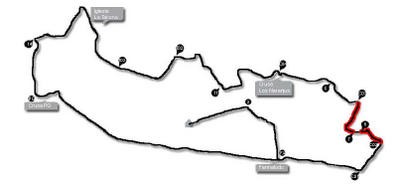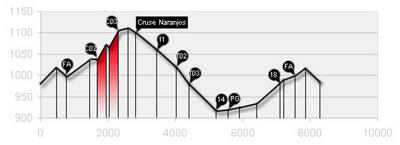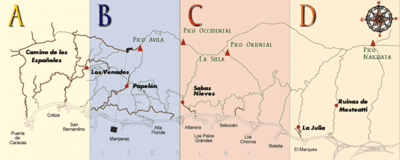Jujitsu - STAHARA

JUJITSU IS BOTH SELF-DEFENSE AND MENTAL TRAINING
Jujitsu as a means of self-defense will teach you to take care of yourself in dangerous situations whether armed or unarmed.
It is a valuable study as it trains you to evade the impact of an opponent's strength and attack him at a point where he can bring only 20 per cent of his strength to bear. It teaches you to unbalance your opponent.
Conversely it trains you to retain your own balance and to bring 100 percent of your strength to bear in every effort you make. A man trained in jujitsu will instinctively act on this principle in everything he does whether engaged in a physical contest or a mental one.
A course of jujitsu therefore will leave its permanent mark on your mentality. It teaches you to retain your poise in the arena where the contests are physical, brawn against brawn, or in the public forum, where mind is pitted against mind, intellect against intellect.
It has another and more immediate result in the resources of self-defense that will be at your immediate disposal whenever you are attacked, or whenever you go to the rescue of someone else.
A strong man by its aid will be enabled to use his strength in a more workmanlike manner, and a weak man will be able to discount the superior strength of his adversary.
A woman equipped with this science will no longer be at the mercy of a ruffian. She will furthermore retain her presence of mind and keep cool, in an emergency.
We will train you to use this principle in everything you do. It is called the
principle of the Stahara.
WHAT THE STAHARA IS
The Stahara is the Abdominal Region. It includes the Diaphragm, the Abdominal Muscles, the Solar Plexus and the Center of Gravity.
This course will train you not only to understand the Stahara principle but to act on it instinctively. You can then use your own strength better; you can handle other men better.
This principle properly applied will instantly give you increased physical power. It will endow you with greater mental control and will give you a stronger personality.
THE WEAKEST MAN'S STAHARA IS STRONGER THAN THE STRONGEST MAN'S ARM
Always play the strength of your Stahara against the strength of your opponent's arm.
This is simply the strategy of Napoleon who attacked the enemy's weakest point with
all the force he could concentrate.
Instead of memorizing this as an abstract principle, visualize it in the concrete instance of the simple trick exemplified on the preceding page.
This is a typical example of how the Stahara principle enters into the execution of every trick in this course.
The leverage the Stahara gives you in the previous trick is obvious, and easily applied. In other tricks it is not so obvious and the student may not see the connection at first between the Stahara and the trick.
The connection is there, however, and it only requires to be discovered and applied. The system of teaching you to use your Stahara in the most obvious instances, at first, enables you to apply it in the less obvious cases.
An increased ability to use your body in this way will come with the progressive practice of this course.
The Stahara fully developed..
THE SECRET OF JUJITSU IS THE STAHARA
The throws of jujitsu are achieved by the mechanical force of your center of gravity playing against opponent's center of gravity.
The center of gravity is contained in the lower abdomen, therefore the proper disposition of your lower abdomen is the most important factor in any given trick.
Conversely the object of your exertions against an opponent is to out-think his center of gravity, by maneuvering him into a position where his lower abdomen is off balance.
An old Japanese master, mentioned in the chapter on "A demonstration in Pain-bearing" (which will follow in due course), told me once when I was very much discouraged at the progress was making, that
Hyaku ii-yasushiWhich, being interpreted, means:
Ichi ii-gatashi.
The hundred tricks are easy to learn
But the one principle is difficult to learn.
On asking him to be kind enough to impart this one principle to me, he informed me that that could only be acquired after years of practice.
This elusive principle, which the Japanese professors make you search out for yourself, this course imparts from the start by means of Stahara training.
HOW THE WORD "STAHARA" ORIGINATED
When I commenced to teach jujitsu in Yokohama, Japan, in every trick I showed how to use the lower abdomen, and how to maneuver opponent's balance. My first pupils were Japanese friends, and lower abdomen to them was shita hara.
Shita (pronounced sh'ta) and hara are two Japanese words meaning under or lower abdomen. The words shita hara mean to a Japanese what the words lower abdomen mean to us -- and nothing more.
This word hara is the same word we meet in hara kiri -- abdomen cutting -- the Japanese method of suicide.
Gradually as I evolved the idea of balance-control and abdominal power, I adopted the word shita-hara as a technical term for a new principle for which there was no name. When teaching the Doughboys, they called it "Stahara" and that is how it was finally written. It is an American word for an American idea.
STA-HA-RA Sta -- pronounced as in star.Japanese teachers of jujitsu do not mention the Stahara when explaining a throw or trick to their disciples.
ha -- pronounced as in harp.
ra -- a has the same sound as in the first two syllables.
They teach the use of the arms and legs, of the hips and shoulders, but do not show the principle of balance, which is the basis of the whole system.
It is therefore an average of ten years before a student of jujitsu in Japan masters these throws. It takes that length of time to acquire the scientific way, in common parlance, to "get the knack" of doing the trick.
Jujitsu is not done with strength of arm or leg and this inability to grasp the underlying principle is why it takes so long to master it.
You must realize the importance of the Stahara. It is here the center of gravity lies. It is
is here the seat of the emotions lies. It is the most important part of the human body, and the most neglected.
LESSON 5.
This lesson shows clearly by means of two photographs the secret of Stahara Control, and teaches you how to apply it.

Fig 14: CENTER OF GRAVITY TOO HIGH -- INCORRECT
NO STRENGTH IN THE STAHARA -- THE ABDOMINAL REGION
Body weak -- easily unbalanced.
Connection between arms and legs absent.
Body cannot move quickly.
Fig 15: CENTER OF GRAVITY LOW -- CORRECT
THE STAHARA -- ABDOMINAL REGION -- FULL OF STRENGTH
Body strong -- well balanced.
Proper connection between arms and legs.
Body able to move quickly.
STAHARA CONTROL
Standing in position of fig. 15 force your stomach, abdomen and diaphragm down as if you were trying to force your abdomen outward against your belt, to make your belt feel tight, as it were.
Check this outward movement by the stomach muscles. Hold your breath hard for a few seconds.
Do not strain yourself in any way. Just keep practising it gently thruout the day whenever you happen to think of it.
Practise it for a few minutes before a mirror keeping your face impassive and preventing any trace of effort showing. You will soon be able to do this without holding your breath.
Keep your head up and shoulders back but have all your muscles relaxed.
STAHARA CONTROL HELPS QUICK MOVEMENT
Dance around the room imitating the movements of a boxer -- this is called "shadow boxing." First raise your ribs as high as you can, as in fig. 14.
Next dance around with Stahara control, as in fig. 15. Note how much more under control your movements are, the connection between your arms and legs is much better; you can put more punch into your arm movements.
Stahara control teaches you to keep limber all over, even your Stahara is not tensed, and it enables you to concentrate all your effort in the proper muscles at the proper time.
Reference:
[1] The Secrets of Jujitsu (By Captain Allan Corstorphin Smith, U.S.A.)


















